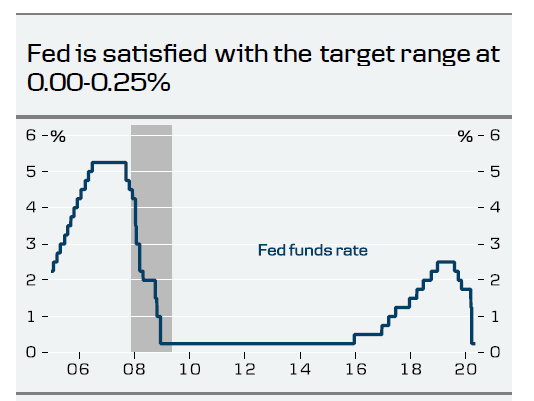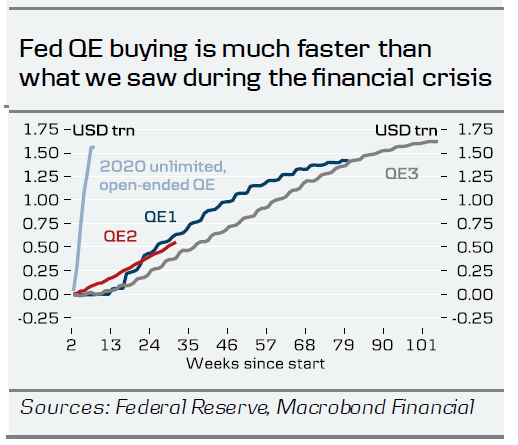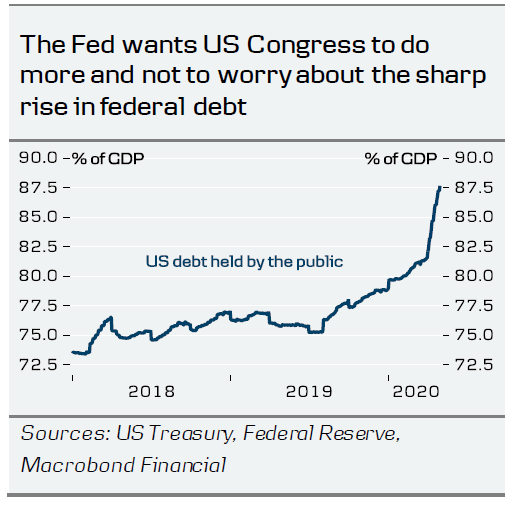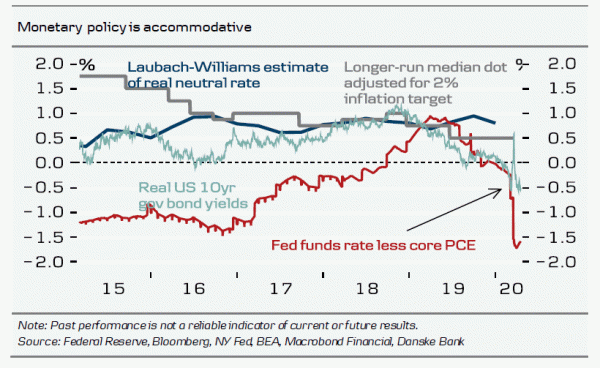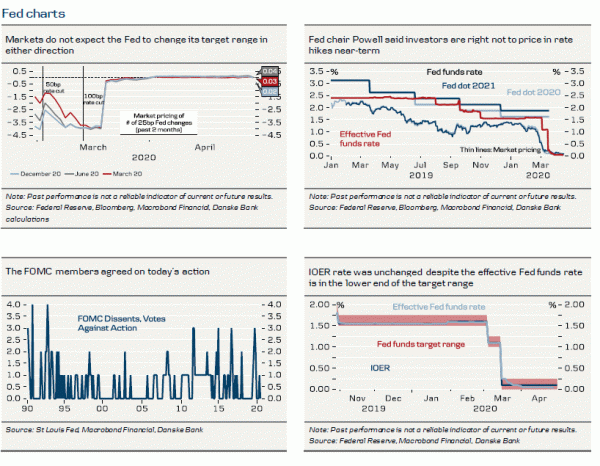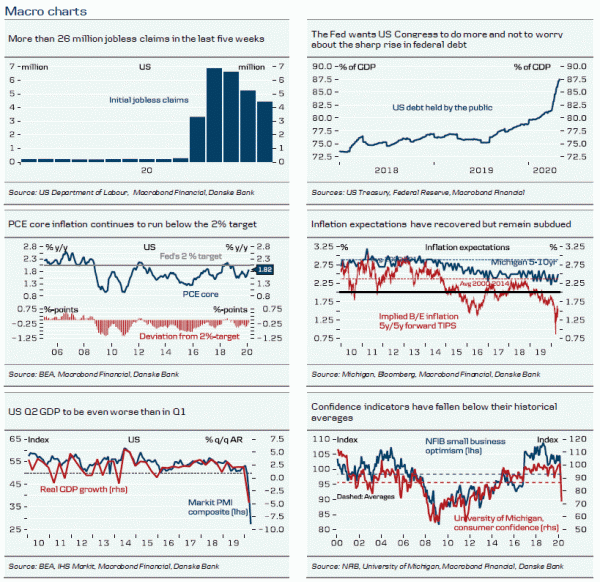On the economy, the Fed expects a rebound in the second half of the year, as the economy reopens. Basically, this is in line with our expectation of a U-shaped recovery. The Fed emphasises that they are not very confident in this outlook and sees the virus outbreak as a big risk to the economy, also over the “medium term” (1-1.5 years ahead). There is no doubt that the Fed fears that we could be in the beginning of a prolonged recession. The Fed also fears of potential long-term damages to the economy stemming from a long crisis. Fed chair Powell highlighted that the economic forecasts are more uncertain than usual given the current circumstances, as the health outcomes are “highly uncertain”, according to the experts briefing the Fed. We agree with these views.
The key message on rates is that the Fed is happy with the target range at 0.00- 0.25%. The Fed did not change its forward guidance and still says that it will maintain the current target range until the economy “has weathered recent events and is on track to achieve its maximum employment and price stability goals”. Fed chair Powell said that the Fed will be “patient” and is “in no hurry” to hike rates. On the other hand, if the biggest economic crisis in modern times have not already forced the Fed to cut rates down to negative territory, it is difficult to see what should, especially now that things (fingers crossed) are moving in the right direction with the number of infections. At several occasions during the Q&A, Fed chair Powell referred to the current level as the “effective lower bound”, which also indicates that the Fed will not cut into negative. We think the Fed will keep rates at the current level at least through 2021. We think current market pricing is fair, which Fed chair Powell also said during the press conference.
The Fed kept its flexibility on QE by keep saying that it will buy “in the amount needed” to support the economy. There had been some speculations that the Fed could change to a specific amount but it did not happen. In our view, this is positive, as it shows the Fed is determined in supporting the economy. So far, QE buying has been a lot faster than we saw during QE1, QE2 and QE3.
On fiscal policy, Fed chair Powell said that he thinks Congress should do more and that this is not the time to worry about increasing federal debt.
On the Fed’s many different facilities, Fed chair Powell highlighted that the Fed will not run out of money. The Fed can change conditions and sizes as needed. We saw that recently when the Fed announced an expansion of the scope and duration of the Municipal Liquidity Facility.
The Fed does not fear a negative deflation spiral, as inflation expectations are holding up.
Fed chair Powell also highlighted that the Fed is likely to do more. With rates at the effective lower bound and a very flexible QE programme, new measures would likely be in form of changes to existing liquidity facilities or new ones. The statement says that the Fed “will use its tools and act as appropriate to support the economy”.




